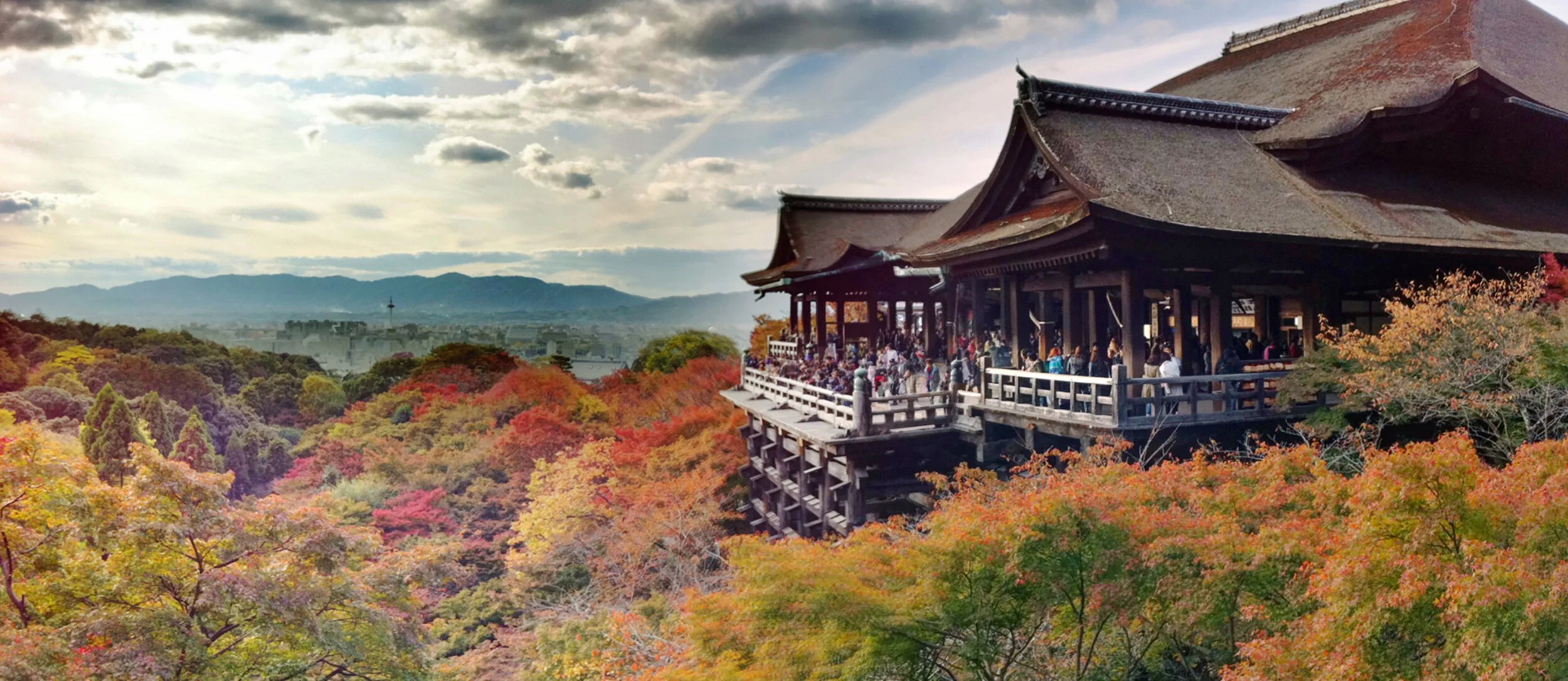
Page 4 of 10
Kanazawa, Japan
Watch your step along the arch of glass
If you haven't noticed already, way back when I was taking picture after picture in Japan, it was still Fall and there was a wondrous display of color. Ok, wondrous might not be the best description, scattered is probably far more accurate. The cascading fall colors in Japan are not like the local hardwood forests that I am accustomed to, but instead a tree here or a tree there, sometimes a few trees together, sometimes not. Still, in the courtyard outside the walls of Kanazawa's Castle (as in most of the places I was lucky enough to be), scattered color was far more than enough and far more than I could have even hoped for.
Kanazawa is off the beaten tourist path, unless you're Japanese that is. The city features above all the Kenroku-en Garden, one of the top three gardens in Japan and one that is as spectacular as its designation suggests. Even on a cloudy and rainy day in November, the gardens paths and bridges were packed with throngs (yes, throngs) of Japanese tourists and me. In the two or three hours that I walked and rewalked and rewalked again the garden, I did not meet a single western (or more accurately non Asian) tourist. They (literally I guess) don't know what they're missing.
This view is the picture postcard view of the garden, with the Kotoji Lantern in the foreground, some scattered color and the just installed yukitsuri off to the left. Yukitsuri are seasonal structures supported by bamboo poles and built out of ropes, all designed with the purpose of helping the carefully sculpted tree branches to survive another snowy winter. Just one more reason why November is the best time to stop by Kenroku-en, if you have the chance.
Kenroku-en is also known as the Six Attributes Garden, with those six attributes being (according to Wikipedia) spaciousness, seclusion, artifice, antiquity, waterways and panoramas. Even with all of the crowds, it was easy to still find and understand the spaciousness and seclusion parts, and antiquity makes some sense while waterways and panoramas are pretty damn obvious. The only one that seems out of place is artifice, unless I'm totally misunderstanding the word's definition, or unless the Japanese translation to English is way, way, way off.
There is more to Kanazawa than a kick ass train station, a picturesque castle and one of the top three gardens in Japan. Down the hill and across the street from Kenroku-en sits the 21st Century Museum of Contemporary Art, which is more than a clumsily named museum in a surprisingly fun building, or, well, maybe it really isn't more than a clumsily named museum in a surprisingly fun building. But, come to think of it, maybe that's all you really need.
The museum building was designed by the Japanese firm SANAA, the people responsible for the new New Museum in New York (the stack of tilted jewel boxes on the Bowery) and the kind of similar glass museum in Toledo (shockingly the Toledo in Ohio, not the Toledo in Spain). It's plan is simple- a great big glass circle (everyone loves circles), with corridors and public spaces around the outside and square galleries and courtyards at the inside. And while it may be quite difficult to get a good orientation of the building (circles can do that), it's really easy to get a good impression of it.
Aaaah! Quick- someone save those people standing in that pool! Oh, never mind. They;re fine. It’s just art.
“The Swimming Pool” by Leandro Erlich is a clever sleight of hand trick, where from the top it looks like you’re looking at a swimming pool and from the bottom it looks like you’re in a swimming pool but in both cases at no point is there any chance of getting wet (unless it’s raining I guess). A permanent installation at the clumsily named 21st Century Museum of Contemporary Art, it is finally your chance to be in a swimming pool where you can not drown, no matter how hard you try.
The 21st Century Museum of Contemporary Art is more than a building, it is also a museum, and a good one at that. And while interior photography is almost always banned, outside it's a free for all. Luckily the lawn is dotted with public artwork, with the most impressive one being from Olafur Eliasson, easily one of my top five favorite living artists (feel free to try and guess any of the other four on that list). "Color Activity House" is a walk through circle with translucent curved panels of different colors, where views, reflections, the building and the city are enhanced through multiple layers of color(s). Fun.
There is even more to Kanazawa than a kick ass train station, a picturesque castle, one of the top three gardens in Japan, a great big circular glass contemporary art museum, a swimming pool where you can not drown and a way too much fun walk through Olafur Eliasson sculpture.
The city's Samurai District in Naga-machi may be historically questionable, but it still was fun to walk through and was literally the only place in Kanazawa where I passed by any non Asian tourists, which probably speaks more about the district's authenticity than anything else I guess.

